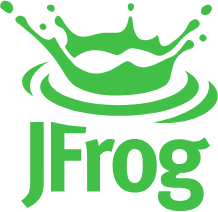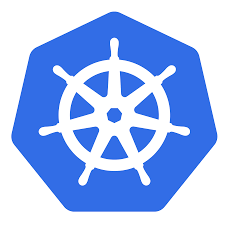It’s funny how DevOps started as this buzzword for smashing silos between devs and ops folks, but now it’s just table stakes for getting code out the door without chaos. In a world where releases used to mean late-night fire drills, these tools aim to make the whole process feel less like herding cats and more like a well-oiled bike ride. We’re diving into a top platform here not to crown a winner, but to unpack what each brings to the table for teams juggling code, tests, and deployments day in, day out.

1. AppFirst
AppFirst enables developers to list what their app needs – such as CPU, memory, or a database – and it handles spinning up the matching infrastructure on any cloud. It manages VPC setup, security groups, IAM policies, and secrets management without requiring anyone to touch Terraform or YAML. Logging, monitoring, and alerting are included as standard, allowing teams to gain immediate visibility into operations. By eliminating the usual infrastructure configuration process, AppFirst ensures teams ship features instead of debugging network rules.
AppFirst keeps costs visible per app and environment, with comprehensive audit logs for every change. It supports switching clouds by adjusting the definition once, automatically adapting the backend setup. The platform is offered as SaaS for quick rollout or self-hosted when teams require full control within their network.
Key Highlights:
- Defines infrastructure from simple app requirements
- Works across major clouds without custom code
- Adds observability tools automatically
- Shows cost breakdown and change history
- Applies consistent security and naming rules
- Provides SaaS or self-hosted options
Services:
- Compute provisioning for container runtimes
- Managed database connections
- Queue and messaging setup
- Network isolation and access controls
- Secrets storage and rotation
- Audit and cost tracking dashboards
Contact and Social Media Information:
- Website: www.appfirst.dev

2. Azure DevOps
Teams using Azure DevOps handle planning, tracking, and collaboration through a mix of tools that fit into existing workflows. They rely on features like boards for visualizing tasks, pipelines for automating builds and tests across different languages and clouds, and repos for managing code changes with pull requests. Integration with other services allows for sharing packages and running tests in a structured way, keeping things organized without forcing a total overhaul.
Security and AI elements weave in naturally, helping with code reviews and compliance checks right from the start. Developers can pull in context from projects to speed up tasks, while agent pools let them tweak environments for specific needs. It’s set up to work alongside familiar setups, so shifts feel incremental rather than disruptive, letting focus stay on the work itself.
Key Highlights:
- Supports agile planning with customizable boards and task tracking
- Enables continuous integration and deployment for various platforms
- Includes repositories for private Git hosting and code collaboration
- Offers testing tools for manual and exploratory approaches
- Integrates AI for code generation and workflow assistance
- Provides artifact management for sharing packages in pipelines
Contact and Social Media Information:
- Website: azure.microsoft.com
- Twitter: x.com/azure
- LinkedIn: www.linkedin.com/showcase/microsoft-azure
- Instagram: www.instagram.com/microsoftazure
3. GitLab
GitLab serves as a central spot where teams manage the full cycle from code to deployment, blending version control with automation in one interface. They use it to handle everything from initial commits to security scans, with AI features assisting in reviews and status updates. The platform connects to IDEs like VS Code, keeping developers in their preferred environment while pulling in project details for context.
Customization comes through rules defined in plain language, allowing agents to adapt to specific team habits. It supports multiple ways to deploy, whether cloud-based or self-hosted, and emphasizes flows that tie into broader tools via integrations. This setup encourages steady iteration without constant context-switching, making room for creative problem-solving amid the routine.
Key Highlights:
- Combines source code management with CI/CD pipelines
- Incorporates AI agents for task handling and code assistance
- Allows custom rules for workflows tailored to team processes
- Supports integrations with external data sources for richer context
- Enables deployment across cloud and on-premise options
- Focuses on security testing embedded in development stages
Contact and Social Media Information:
- Website: gitlab.com
- Facebook: www.facebook.com/gitlab
- Twitter: x.com/gitlab
- LinkedIn: www.linkedin.com/company/gitlab-com

4. Copado
Copado focuses on streamlining processes within Salesforce environments, where teams map dependencies and automate flows from planning to release. They leverage intelligence tools to spot relationships in org setups, reducing surprises during changes, alongside automation for version control and deployments. Testing gets a robotic touch to cover repetitive checks, freeing up time for deeper validation.
AI threads through stages like code generation and pipeline tweaks, drawing from existing data to inform decisions. It’s built to scale from simple starts to complex setups, handling governance without rigid barriers. Teams find it slots into daily rhythms, emphasizing clarity over constant rework, so efforts land where they matter most.
Key Highlights:
- Maps org dependencies for informed change management
- Automates CI/CD tailored to Salesforce workflows
- Uses robotic tools for scalable testing
- Integrates AI for pipeline and code enhancements
- Supports version control and deployment tracking
- Adapts to varying team sizes and complexity levels
Contact and Social Media Information:
- Website: www.copado.com
- Facebook: www.facebook.com/CopadoSolutions
- Twitter: x.com/CopadoSolutions
- LinkedIn: www.linkedin.com/company/copadosolutions
- Instagram: www.instagram.com/copadosolutions
- Address: 330 N. Wabash Ave., Fl 23, Chicago IL 60611 United States
- Phone: 18772672360

5. Harness
Clients turning to Harness manage software delivery through AI-driven automation that ties into their existing pipelines. They set up continuous integration and deployment flows, handling everything from code commits to production rolls across multiple clouds and regions. Tools for managing infrastructure as code and database changes fit right in, letting teams tweak environments without starting from scratch each time. It’s all about keeping the momentum going once code leaves the developer’s machine, with agents stepping in to handle routine checks and optimizations.
Testing and security scans run alongside, using predictive bits to flag issues early or simulate failures to build resilience. Cost tracking pulls in recommendations based on usage patterns, while insights into engineering metrics help spot bottlenecks. Companies appreciate how it plugs into over a hundred other tools, avoiding the need for custom scripts just to make things talk to each other.
Key Highlights:
- Automates CI/CD for multi-cloud and multi-service setups
- Includes internal portals for developer self-service
- Manages infrastructure as code and database operations
- Provides chaos engineering for system reliability
- Offers feature flags and experimentation controls
- Tracks cloud costs with policy enforcement
Contact and Social Media Information:
- Website: www.harness.io
- Facebook: www.facebook.com/harnessinc
- Twitter: x.com/harnessio
- LinkedIn: www.linkedin.com/company/harnessinc
- Instagram: www.instagram.com/harness.io
- Address: 26 Throgmorton Street, 4th floor, London EC2N 2AN

6. Red Hat OpenShift
Teams on Red Hat OpenShift build and run applications on a Kubernetes-based setup that works across different infrastructures. They handle the full lifecycle, from development to deployment, using operators that automate management tasks like scaling or monitoring. CI/CD pipelines integrate with GitOps for consistent releases, while service mesh and serverless options simplify microservices handling.
AI workloads get specific support for model management in hybrid environments, alongside virtualization for legacy apps. Observability tools keep an eye on performance in real time, helping troubleshoot before problems escalate. Clients choose between self-managed versions or cloud-hosted ones, fitting into whatever setup they already have without forcing a big switch.
Key Highlights:
- Centers on Kubernetes for container orchestration
- Supports AI model lifecycle across hybrid clouds
- Includes GitOps and pipelines for automated workflows
- Provides serverless and service mesh capabilities
- Offers real-time system monitoring and alerts
- Works with various infrastructures and cloud providers
Contact and Social Media Information:
- Website: www.redhat.com
- E-mail: apac@redhat.com
- Facebook: www.facebook.com/RedHat
- Twitter: x.com/RedHat
- LinkedIn: www.linkedin.com/company/red-hat
- Address: Canal House, Station Road, Portarlington, Co. Laois, R32 AP23, Ireland
- Phone: +353578684800

7. JFrog
Organizations using JFrog centralize their software supply chain with a platform that stores and distributes packages of all types. They repository artifacts from builds, scan for vulnerabilities, and control what gets promoted through curation policies. Distribution networks speed up delivery to edge locations or other teams, while integrations connect to existing DevOps tools without much rework.
For AI and ML flows, specific handling for models and data sets keeps things organized. IoT device updates follow similar patterns, ensuring binaries reach where needed securely. Developers find it acts as a single source for pulling dependencies, cutting down on version mismatches that sneak in otherwise.
Key Highlights:
- Hosts repositories for multiple package formats
- Scans artifacts for security issues
- Curates packages to block risky components
- Distributes releases through networked endpoints
- Supports ML model management
- Handles IoT software updates
Contact and Social Media Information:
- Website: jfrog.com
- Facebook: www.facebook.com/artifrog
- Twitter: x.com/jfrog
- LinkedIn: www.linkedin.com/company/jfrog-ltd
- Address: 270 E Caribbean Dr., Sunnyvale, CA 94089, United States
- Phone: +1-408-329-1540

8. Opsera
Organizations relying on Opsera pull together their DevOps tools into one platform that handles pipelines for various app types. They connect CI/CD setups from different vendors, automate provisioning and deployments, and link in CRM systems like Salesforce for smoother handoffs between code and customer data. Workflows cover SDLC stages, SaaS apps, and data analytics, with no-code options to add integrations without scripting everything from scratch. It’s geared toward keeping updates manageable, like testing changes before full rollout to avoid mid-process hiccups.
Security checks and compliance monitoring slot in early, scanning for vulnerabilities and enforcing policies as part of the flow. Insights draw from metrics across tools to track developer experience and pipeline performance, helping spot where things drag. Teams use it to unify data ops too, turning scattered logs into views that inform tweaks without constant manual digging.
Key Highlights:
- Connects multiple CI/CD tools for mixed environments
- Automates pipelines for SDLC and SaaS use cases
- Provides no-code integrations for tool additions
- Embeds security scans and policy enforcement
- Gathers insights from DORA and other metrics
- Supports data-driven workflow optimizations
Contact and Social Media Information:
- Website: opsera.ai
- Twitter: x.com/opseraio
- LinkedIn: www.linkedin.com/company/opsera

9. Chef
Development groups with Chef use the platform to standardize configs across setups, whether cloud or on-site. They run audits on a schedule, tying in standards to check compliance without pulling folks off other tasks. Orchestration pulls in various tools under one dashboard, handling jobs that span environments, from hybrid mixes to isolated networks. Templates kickstart workflows for things like incident responses or cert renewals, keeping steps repeatable.
Automation extends agentless where needed, verifying setups through build-and-converge cycles that confirm everything lines up. It mixes UI clicks with code-based policies for flexibility in ops, bridging gaps in the pipeline. Training paths cover hands-on labs for automation basics up to advanced management, so newer team members get up to speed on the stack.
Key Highlights:
- Standardizes infrastructure configs for repeatability
- Schedules compliance audits with standard content
- Orchestrates tools from a central control point
- Executes jobs across diverse environments
- Offers templates for common workflow events
- Supports agentless automation extensions
Contact and Social Media Information:
- Website: www.chef.io
- Twitter: x.com/chef
- LinkedIn: www.linkedin.com/company/chef-software
- Instagram: www.instagram.com/chef_software
- Address: Venture House, 2 Arlington Square Bracknell, Berkshire, RG12 1WA United Kingdom
- Phone: +44-1344-953434

10. Perforce
Teams at Perforce clients handle code and assets with tools that scale for big projects, keeping version control tight even as files pile up. They weave in testing for web and mobile early, using data masking to protect info during runs. Intelligence layers pull AI to analyze pipelines, flagging slowdowns or risks from code to live. Automation secures infrastructure moves, enforcing policies that stick through changes.
Compliance shifts left with checks baked into development, covering everything from code commits to deploys. Open source bits get managed alongside proprietary stuff, with support for tracing and support. It’s about layering governance without halting progress, so releases hit targets without extra rounds of fixes.
Key Highlights:
- Scales version control for code and assets
- Automates data handling and masking
- Applies AI for pipeline insights
- Integrates testing across app types
- Enforces compliance in development stages
- Manages open source components
Contact and Social Media Information:
- Website: www.perforce.com
- E-mail: info@perforce.com
- Twitter: x.com/perforce
- LinkedIn: www.linkedin.com/company/perforce
- Address: 400 First Avenue North #400 Minneapolis, MN 55401
- Phone: +1 612.517.2100

11. DBmaestro
Teams handling database changes with DBmaestro fit it into their CI/CD setups to manage releases from start to finish. They automate the flow for database updates, keeping track of configs to spot drifts early and run checks like dry-runs before anything goes live. Source control logs every tweak, turning migration scripts into a reliable history that cuts down on mix-ups during handoffs. It’s one of those tools that reminds you how databases can lag behind app code if left unchecked, so this setup nudges things along without extra drama.
Observability layers in monitoring for deployments, while compliance tools handle access rules and audits to keep things traceable. AI steps in to scan code changes, flagging issues and suggesting fixes drawn from patterns. Overall, it ties database work into broader pipelines, letting DBAs and devs share the load more evenly across environments.
Key Highlights:
- Automates database CI/CD with self-service options
- Tracks configuration drifts and runs pre-release analysis
- Maintains version history for changes and migrations
- Monitors deployments for troubleshooting
- Enforces policies and standards in workflows
- Uses AI to identify and resolve code errors
Contact and Social Media Information:
- Website: www.dbmaestro.com
- E-mail: sales@dbmaestro.com
- Facebook: www.facebook.com/dbmaestro
- LinkedIn: www.linkedin.com/company/dbmaestro
- Address: 1800 Pembrook Drive Suite 300 Orlando, FL 32810, U.S.
- Phone: 321-607-7229

12. BuildMaster
Groups using BuildMaster set it up as their go-to for orchestrating builds and deploys, pulling in scripts and tools they already know. It sits out front like a dashboard, lining up steps so the whole crew sees what’s happening without chasing emails. No-code bits let quick setups with drags and drops, while deeper users layer in PowerShell or Python for custom twists. Funny how it bridges that gap for folks dipping toes into automation without rewriting everything.
Hosting stays in-house on Windows or Linux boxes, or floats in the cloud if that’s the vibe, keeping control close. The free tier covers most basics, so testing pipelines doesn’t lock you in right away. It meshes with whatever stack’s running, focusing on steady releases over flashy overhauls.
Key Highlights:
- Automates builds and deployments end-to-end
- Gives team-wide visibility into release steps
- Supports no-code and low-code pipeline creation
- Integrates with existing tools as a central hub
- Allows scripting in multiple languages
- Runs self-hosted on various platforms
Contact and Social Media Information:
- Website: inedo.com
- Twitter: x.com/inedo
- LinkedIn: www.linkedin.com/company/inedo
- Address: 56 Front St. Upper Berea, OH 44017 United States
13. Jenkins
Developers leaning on Jenkins spin up automation servers to handle the grunt work of integrating code changes and pushing them out. It starts simple as a Java app you can fire up anywhere, then grows with plugins that hook into tests, deploys, or whatever else the project needs. Distributed jobs spread the load across machines, so big builds don’t bog down one spot. I’ve seen it evolve from basic CI runs to full hubs, mostly because tweaking via the web UI feels straightforward, errors and all.
The plugin ecosystem pulls in hundreds of connections to other gear, keeping it flexible without a total rewrite. Community tweaks keep it humming, from pull requests on repos to shared configs. Deployment’s a breeze on desktops or servers, fitting into mixed OS setups without much fuss.
Key Highlights:
- Runs as an extensible automation server
- Handles continuous integration and delivery
- Configures through a web interface with checks
- Distributes tasks across multiple machines
- Extends via plugins for various functions
- Supports builds, tests, and deployments
Contact and Social Media Information:
- Website: www.jenkins.io
- Twitter: x.com/jenkinsci
- LinkedIn: www.linkedin.com/company/jenkins-project
14. Terraform
Development teams employing Terraform describe their infrastructure setups using a declarative configuration language that outlines resources like servers, networks, and storage. They apply changes through the CLI, which plans and executes updates while tracking state to avoid unnecessary work. This approach lets them version control the whole setup alongside code, making tweaks collaborative and repeatable across environments. It’s interesting how it treats infra like just another file in the repo, pulling in providers for clouds or services to keep things provider-agnostic without much hassle.
Collaboration happens via HCP Terraform, where workspaces manage runs and variables for team input. Tutorials guide through basics like deploying to AWS or Azure, often tying into Git workflows for previews on pulls. Extensions like CDK for Terraform add coding flavors for those who prefer it over pure HCL, blending declarative and programmatic styles.
Key Highlights:
- Uses declarative configs for infrastructure resources
- Tracks state to manage changes efficiently
- Integrates with version control for collaborative edits
- Supports multiple cloud providers via plugins
- Enables preview environments in CI workflows
- Allows code-based definitions with CDK integration
Contact and Social Media Information:
- Website: developer.hashicorp.com
- E-mail: support@hashicorp.com

15. Kubernetes
Operators running Kubernetes cluster containers into pods that bundle app parts for straightforward oversight and scaling. They handle rollouts by easing in updates while watching health metrics, ready to revert if metrics dip. Discovery works through built-in DNS and load spreaders, so services find each other without code tweaks. Storage hooks up automatically from local drives to cloud volumes, keeping data persistent across restarts.
Healing kicks in for crashes by respawning pods or scaling nodes, while batch jobs run one-offs like CI tasks with failover. Scaling adjusts pod counts on demand or CPU triggers, packing them smartly to fit resources without waste. Extensibility means adding custom schedulers or operators without forking the core, fitting into hybrid or multi-cloud spots.
Key Highlights:
- Groups containers into pods for app logic units
- Rolls out changes progressively with health checks
- Balances loads and discovers services via DNS
- Orchestrates storage mounts from various sources
- Heals failures by restarting or replacing components
- Scales horizontally based on usage or commands
Contact and Social Media Information:
- Website: kubernetes.io
- Twitter: x.com/kubernetesio
- LinkedIn: www.linkedin.com/company/kubernetes
Wrapping things up
Wrapping up, it’s clear that DevOps isn’t about chasing the shiniest tool anymore – it’s about finding what actually fits the way your team works without adding more headaches. Whether you’re piecing together pipelines in the cloud, keeping databases in line, or just trying to ship without the usual 2 a.m. surprises, these platforms give you a way to keep the chaos in check. The real win comes when you stop fighting the process and start using it to move faster, safer, and with fewer all-hands meetings about why staging blew up again. Pick what makes sense, tweak as you go, and remember: the goal is working software, not perfect configs.


